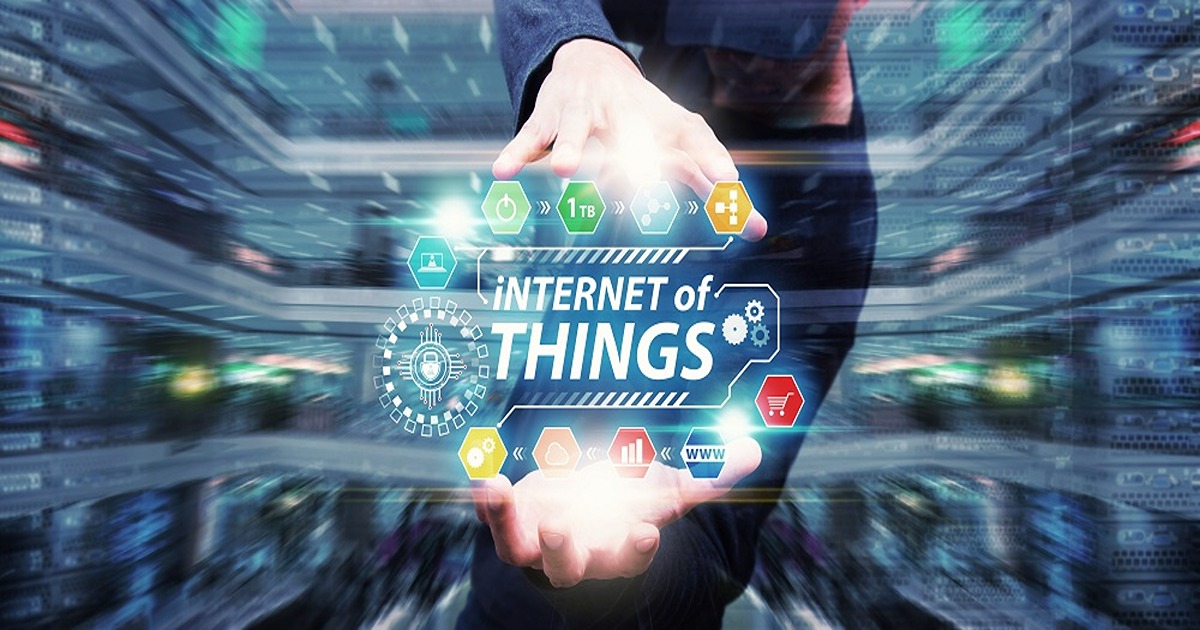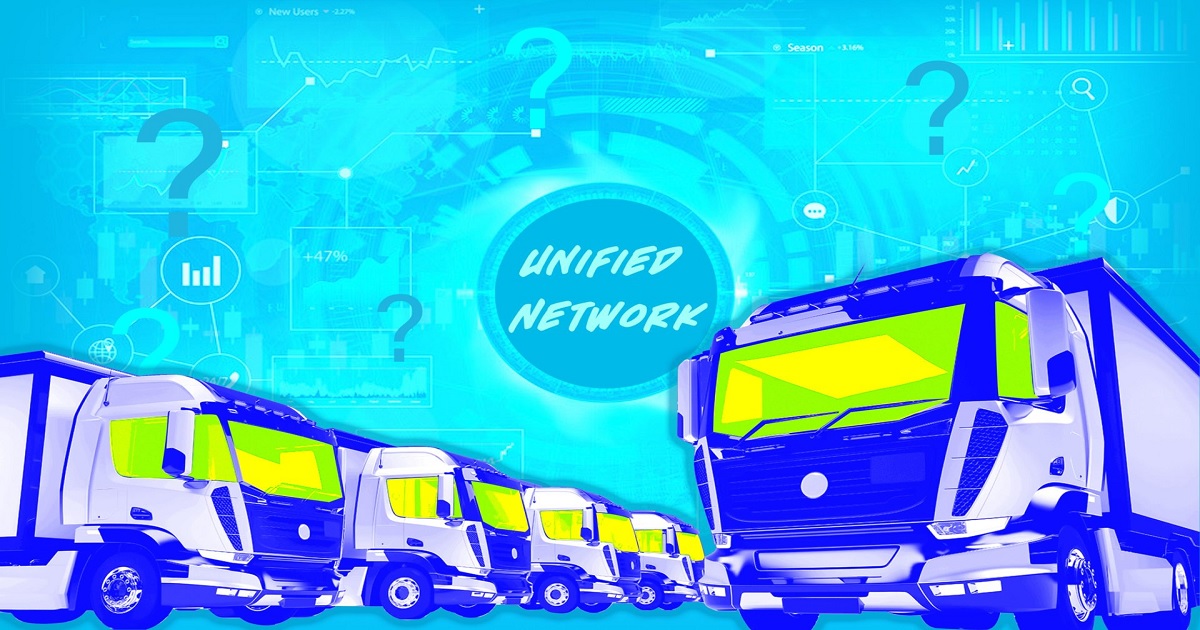
IoT Security
Article | June 28, 2023
Physical and digital security are changing due to cloud-based IoT software, which makes it possible to combine them and use them to utilize data better. In almost every sector, data is essential to success, and security is no exception. To better understand what's going on in your business, you can combine cloud-based solutions that contain all the information on a single interface. For instance, integrating security camera feeds with cloud-based access control systems enables real-time visual identification verification.
Utilizing cloud-based IoT technology also enhances productivity and enables quick replies. Combining digital and physical security, often known as security convergence, is another technique to optimize IoT and cloud-based security solutions. To guard against internet flaws and intrusions, a cloud-based physical security system needs cybersecurity software. In a similar vein, physical security measures prevent sensitive data from getting into the wrong hands. Teams for physical and cyber security might combine to provide a more comprehensive plan of action.
Maintaining current versions of the technology you are using in your security plan is necessary for future-proofing your technology. To ensure that your cloud-based system has no vulnerabilities that could expose your company to cybersecurity risks, it is crucial to keep all software updated. Updates can be automated and carried out remotely with cloud-based software, requiring little effort on your part to keep your software current.
You have the chance to develop a security system that is future-proof when a firm adopts cloud-based IoT technologies as part of your security plan. When organizations use IoT technology, cybersecurity is a significant concern. However, combining physical and digital security lets you ensure your cloud-based system is well-protected from vulnerabilities. In addition, your security and IT teams will be better able to manage the evolving security landscape if you combine physical and digital security ideas.
Read More

Industrial IoT, IoT Security
Article | July 11, 2023
Artificial intelligence (AI) has already made headway into becoming a general-purpose technology vastly impacting economies. Yet, the interpretation and estimated trajectory for something remotely close to what we call AI now was first explored in the 1950s.
Until this very day, AI keeps on evolving further. Though let’s face it, AI would have been useless without data. With around 2.5 quintillion bytes of data being generated every day, the numbers will shoot up as the Internet of Things (IoT) enters the game.
Let’s see what this is all about and where and how exactly IoT crosses paths with AI applications.
IoT fundamentals: Where does IoT meet AI
The benefits of IoT in AI
Challenges of IoT in AI
Why implement machine learning in IoT
IoT applications for AI
Key takeaways
IoT fundamentals: Where does IoT meet AI?
What is meant by the term internet of things (IoT) is essentially a system of correlated digital and mechanical appliances, computing devices, and sensors embedded often into everyday objects that transfer data over a network. IoT connects the internet to any and every physical thing or place in the world.
Modern IoT has advanced from the mere merging of microelectromechanical systems to wireless technologies, and faster data transfer through the internet. This resulted in a confluence of information technology and artificial intelligence, allowing unstructured machine-generated data to be evaluated for insights that could lead to new developments.
More and more industries are now referring to IoT to function more proficiently, provide better customer service, escalate the significance of their business, and implement robust decision-making.
Machine learning for IoT can be used to identify anomalies, predict emerging trends, and expand intelligence through the consumption of audio, videos, and images. The implication of machine learning in IoT can substitute manual processes and offer automated systems using statistically backed up actions in critical processes.
The benefits of IoT in AI and real life
IoT offers the following benefits to AI applications:
IoT data for business purposes
Cost and time savings
Task automation and reduction of human intervention
Higher quality of life
IoT data for business purposes
IoT can also be viewed as a data pool. That means by aggregating IoT data, one can extract useful data-driven feedback, which in turn (used properly) may foster effective decision-making. Businesses can also identify new market opportunities, not because of IoT itself but by using the data IoT provides. And since IoT offers companies access to more data, and hence advanced analytics of that data, its usage can eventually result in improved customer outcomes and enhanced service delivery.
Cost and time savings
When devices get connected, cost reductions come along with it. The gathering of different data allows for advances in efficiency, and it leads to money surplus and low-cost materials.
Task automation and reduction of human intervention
Nowadays, devices that are internet-connected can be found in every aspect of our lives, and it is safe to say that they make tasks easier. These automation features range from real-time AI-powered chatbots to home automation control systems, and all of it usually takes a click of a button.
For businesses offering AI-enabled solutions, similar advancements can be achieved with pipeline automation too. That includes significant cuts in annotation and QA time. By leveraging SuperAnnotate’s platform, hundreds of companies recorded faster task completion and more accuracy in prediction results.
Higher quality of life
IoT is not only beneficial in the business aspects but it also creates better living circumstances for us. Smart cities and agriculture, intelligent homes, and food waste solutions are some of the most common ways of IoT providing better, more sustainable living conditions for people.
Challenges of IoT in AI
Despite the numerous benefits and advancements that IoT brings to the table, there have been a few limitations with it. Some of them are listed below:
Privacy issues
Data overflow
Bug issues
Compatibility issues
Privacy issues
With the increased connection between multiple devices or their coexistence for model development purposes, more information is shared between them, which poses vulnerability to your data and makes room for caution. Added layers of protection are needed to prevent risks of data leaks and other threats.
Data overflow
Eventually, organizations will have to find a way to deal with the large numbers of IoT devices, and that will include the collection and systematic management of all the data from those IoT devices. The proper use of data lakes and warehouses, close governance, and intuitive arrangement of datasets will become an utmost priority.
Join hundreds of leading companies who build super high-quality training data up to 5x faster using SuperAnnotate’s intuitive data curation and robust project management features.
Bug issues
If one IoT device has a bug in its system, there is a large chance that every other connected device will also have it.
Compatibility issues
Because there are no international standards of compatibility for IoT, it's harder for different devices to communicate with one another.
Why implement machine learning in IoT
More and more companies are combining IoT with machine learning projects so they can achieve analytical skills on a large variety of use cases which allows their businesses to have access to fresh insights and adopt innovative automation. By implementing machine learning for IoT, they can leverage the following:
Convert data into a coherent format
Arrange the machine learning model on device, edge, and cloud
Enable use of data on edge devices directly for complex decision making
IoT applications for AI
Although we have covered the basics of IoT, its implications for AI are not as simple. Many corporations are adopting IoT which allows them to have an advanced approach to growing and advancing their business. Novel IoT applications are offering organizations the ability to plan and implement more vigorous risk management strategies. Some of the more common uses of IoT in AI encompass the following:
Transport logistics
Not only does IoT expand the material flow systems in transport logistics, but it also improves the automatic identification and global positioning of freight. It also increases energy efficiency and consequently declines the consumption of energy.
Smart cities
Although the term smart city is still incomplete, it mainly refers to an urban area that endorses sustainable enlargement and high quality of life. Giffinger et al.’s model explains the features of a smart city, including the people, the government, the economy, and lifestyle.
E-health control
The two main objectives of future health care are e-health control and prevention. People nowadays can choose to be monitored by physicians even if they do not live in the same country or place. Tracing and monitoring peoples’ health history makes IoT-assisted e-health extremely useful. IoT healthcare solutions could also benefit the specialists, as they can collect information to advance their medical calculations.
Key takeaways
Ever since its development, IoT, especially AI-enabled IoT, as discussed, has been enhancing our daily lives and directing us to work smarter while having complete control over the process. Besides having smart appliances to elevate homes, IoT devices can also be essential for providing insights and an actual look for businesses into their systems. Heading forward, IoT will continue to develop as more organizations get to understand its potential usage and tangible benefits.
Read More

Industrial IoT, IoT Security
Article | July 12, 2023
As consumer demands evolve, fleet managers are turning to IoT to deliver products faster and more efficiently. The progress being made in edge computing represents the full potential of IoT: the power of data on the move. However, operating on the edge also reveals some of IoT’s greatest challenges: maintaining network security as the number of endpoints multiplies; rethinking traditional business models as industries become increasingly interdependent; and, perhaps most importantly, establishing a seamless, reliable network across borders, cultures, and regulatory environments.
Read More

Enterprise Iot
Article | July 20, 2023
Enhancing IoT security: Unveiling the significance of penetration testing in securing real-world IoT applications, identifying vulnerabilities, and mitigating risks for the protection of IoT data.
Contents
1. Introduction to IoT Application Security and Penetration Testing
1.1 Vulnerabilities of IoT application security
2. Fundamentals of IoT Penetration Testing
3. Considerations for IoT Penetration Testing
4. Methodologies and Approaches for IoT Penetration Testing
5. Takeaway
1. Introduction to IoT Application Security and Penetration Testing
Securing real-world IoT applications is paramount as the Internet of Things (IoT) permeates various aspects of any individuals lives. Penetration testing serves as a vital tool in identifying vulnerabilities and assessing the resilience of IoT systems against cyber threats. In this article, delve into the significance of penetration testing in securing IoT applications, exploring its role in identifying weaknesses, mitigating risks, and ensuring the integrity and confidentiality of IoT data.
1.1 Vulnerabilities of IoT application security
Expanded Attack Surface: The proliferation of IoT devices has dramatically expanded the attack surface, increasing the potential for security breach enterprise networks. With billions of interconnected devices, each presenting a potential vulnerability, the risk of unauthorized access, data breaches, and other security incidents is significantly heightened.
Risks: IoT devices often possess limited computational resources, making them susceptible to software and firmware vulnerabilities. Their resource-constrained nature can limit the implementation of robust security measures, leaving them exposed to potential attacks. Furthermore, a significant concern is the prevalence of default or weak credentials on these devices.
Diverse Threat Landscape: The threat landscape surrounding IoT devices is extensive and ever-evolving. It encompasses various attack vectors, including malware, botnets, DDoS attacks, physical tampering, and data privacy breaches. One notable example is the Mirai botnet, which compromised a vast number of IoT devices to launch large-scale DDoS attacks, leading to significant disruptions in internet services. In addition, IoT devices can serve as entry points for infiltrating larger networks and systems, allowing attackers to pivot and gain control over critical infrastructure.
Botnets: IoT devices can be infected with malware and become part of a botnet, which can be used for various malicious activities. Botnets are often utilized to launch distributed denial-of-service (DDoS) attacks, where a network of compromised devices overwhelms a target system with traffic, causing it to become inaccessible.
Ransomware: IoT devices are also vulnerable to ransomware attacks. Ransomware is malicious software that encrypts the data on a device and demands a ransom payment in exchange for the decryption key.
Data Breaches: IoT devices can be targeted to steal sensitive data, including personal identifiable information (PII) or financial data. Due to inadequate security measures, such as weak authentication or unencrypted data transmissions, attackers can exploit IoT devices as entry points to gain unauthorized access to networks and systems.
2. Fundamentals of IoT Penetration Testing
IoT penetration testing, also known as ethical hacking or security assessment, is a critical process for testing and identifying vulnerabilities and assessing the security posture of IoT devices, networks, and applications. It involves simulating real-world attacks to uncover weaknesses and provide insights for remediation.
IoT penetration testing involves identifying vulnerabilities, conducting targeted attacks, and evaluating the effectiveness of security controls in IoT systems. IoT pen-testing aims to proactively identify and address potential weaknesses that malicious actors could exploit. The methodology of IoT pen-testing typically follows a structured approach. It begins with attack surface mapping, which involves identifying all potential entry and exit points that an attacker could leverage within the IoT solution. This step is crucial for understanding the system's architecture and potential vulnerabilities. Pentesters spend considerable time gathering information, studying device documentation, analyzing communication protocols, and assessing the device's hardware and software components.
Once the attack surface is mapped, the following steps involve vulnerability identification and exploitation. This includes conducting security tests, exploiting vulnerabilities, and evaluating the system's resilience to attacks. The penetration testers simulate real-world attack scenarios to assess the device's ability to withstand threats. After exploitation, post-exploitation activities are performed to determine the extent of the compromise and evaluate the potential impact on the device and the overall IoT ecosystem. Finally, a detailed technical report summarizes the findings, vulnerabilities, and recommendations for improving the device's security.
3. Considerations for IoT Penetration Testing
Fuzzing and Protocol Reverse Engineering: Employ advanced techniques like fuzzing to identify vulnerabilities in communication protocols used by IoT devices. Fuzzing involves sending malformed or unexpected data to inputs and analyzing the system's response to uncover potential weaknesses.
Radio Frequency (RF) Analysis: Perform RF analysis to identify weaknesses in wireless communication between IoT devices. This includes analyzing RF signals, monitoring wireless communication protocols, and identifying potential vulnerabilities such as replay attacks or unauthorized signal interception.
Red Team Exercises: Conduct red team exercises to simulate real-world attack scenarios and evaluate the organization's detection and response capabilities. Red team exercises go beyond traditional penetration testing by emulating the actions and techniques of skilled attackers. This helps uncover any weaknesses in incident response, detection, and mitigation processes related to IoT security incidents.
Embedded System Analysis: Gain expertise in analyzing and reverse engineering embedded systems commonly found in IoT devices. This includes understanding microcontrollers, debugging interfaces, firmware extraction techniques, and analyzing the device's hardware architecture. Embedded system analysis helps identify low-level vulnerabilities and potential attack vectors.
Zero-Day Vulnerability Research: Engage in zero-day vulnerability research to identify previously unknown vulnerabilities in IoT devices and associated software. This requires advanced skills in vulnerability discovery, exploit development, and the ability to responsibly disclose vulnerabilities to vendors.
4. Methodologies and Approaches for IoT Penetration Testing
Mobile, Web and Cloud Application Testing
Mobile, web, and cloud application testing is integral to IoT penetration testing, focusing on assessing the security of applications that interact with IoT devices. This methodology involves various steps to evaluate the security of these applications across different platforms. For mobile applications, the methodology includes reviewing the binary code, conducting reverse engineering to understand the inner workings, and analyzing the file system structure. Sensitive information such as keys and certificates embedded within the mobile app are scrutinized for secure storage and handling. The assessment extends to examining the application's resistance to unauthorized modifications. In web applications, the testing covers common vulnerabilities like cross-site scripting (XSS), insecure direct object references (IDOR), and injection attacks. Application reversing techniques are employed to gain insights into the application's logic and potential vulnerabilities. Additionally, hardcoded API keys are identified and assessed for their security implications.
Firmware Penetration Testing
Firmware penetration testing is a crucial aspect of IoT security assessments, aiming to identify vulnerabilities within the firmware running on IoT devices. The methodology encompasses multiple steps to uncover weaknesses. The process begins with binary analysis, dissecting the firmware to understand its structure, functionality, and potential vulnerabilities. Reverse engineering techniques are applied to gain deeper insights into the firmware's inner workings, exposing potential weaknesses like hardcoded credentials or hidden functionality. The analysis extends to examining different file systems used in the firmware and evaluating their configurations and permissions. Sensitive keys, certificates, and cryptographic material embedded within the firmware are scrutinized for secure generation, storage, and utilization. Additionally, the resistance of the firmware to unauthorized modification is assessed, including integrity checks, secure boot mechanisms, and firmware update processes.
IoT Device Hardware Pentest
IoT device hardware penetration testing involves a systematic methodology to assess the security of IoT devices at the hardware level. This comprehensive approach aims to identify vulnerabilities and weaknesses that attackers could exploit. The methodology includes analyzing internal communication protocols like UART, I2C, and SPI to understand potential attack vectors. Open ports are examined to evaluate the security controls and risks associated with communication interfaces. The JTAG debugging interface is explored to gain low-level access and assess the device's resistance to unauthorized access. Extracting firmware from EEPROM or FLASH memory allows testers to analyze the code, configurations, and security controls. Physical tampering attempts are made to evaluate the effectiveness of the device's physical security measures.
5. Takeaway
Penetration testing is crucial in securing real-world IoT applications, enabling organizations to identify vulnerabilities and mitigate risks effectively. By conducting comprehensive and regular penetration tests, organizations can proactively identify and address security weaknesses, ensuring the integrity and confidentiality of IoT data. With the ever-growing threat landscape and increasing reliance on IoT technologies, penetration testing has become indispensable to safeguard IoT applications and protect against potential cyber-attacks.
Several key factors will shape the future of IoT penetration testing. First, the increasing complexity of IoT systems will require testing methodologies to adapt and assess intricate architectures, diverse protocols, and a wide range of devices. Second, there will be a greater emphasis on security by design, with penetration testing focusing on verifying secure coding practices, robust access controls, and secure communication protocols. Third, supply chain security will become crucial, necessitating penetration testing to assess the security measures implemented by vendors, third-party components, and firmware updates. Fourth, integrating IoT penetration testing with DevSecOps practices will ensure continuous monitoring and improvement of IoT system security. Lastly, as attackers become more sophisticated, future IoT penetration testing methodologies will need to keep pace with evolving IoT-specific attack techniques. By embracing these advancements, IoT penetration testing will play a vital role in ensuring the security and privacy of IoT deployments.
Read More